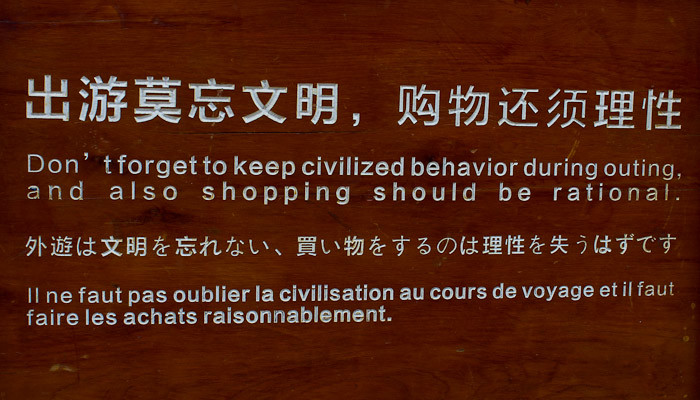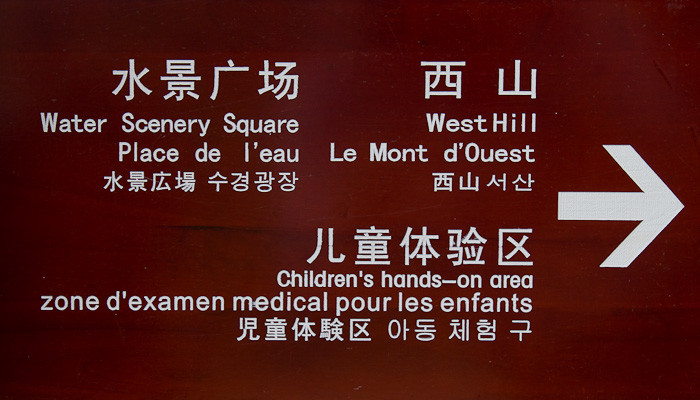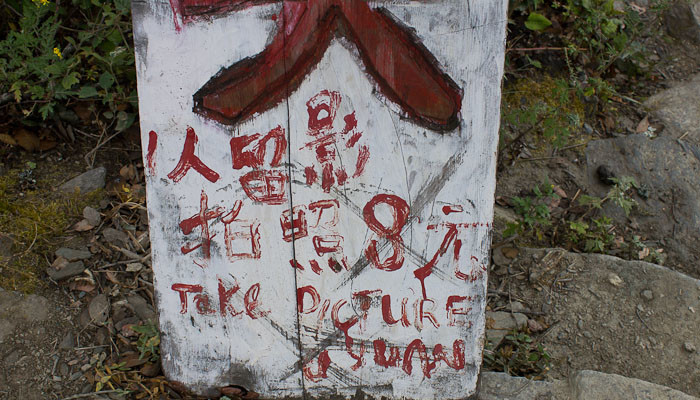It’s All About The Cross-Hatching
“Bwahahaha,” I say. “Did you know the Chinese for ‘writer’ is, literally, ‘sit-at-home’?”
“No,” says Zac. “NOOB! The ‘zuo’ in ‘zuo-jia’ is a different kind of ‘zuo’ from the ‘zuo’ that means sit.”
“Oh,” I say, racking my brains to find out how many Chinese characters for ‘zuo’ I actually know. “Is it the ‘zuo’ in ‘gong-zuo’? The work ‘zuo’?”
“Nah,” he says. “It’s the first ‘zuo’ in ‘zuo gong-zuo’.”
“So it means, basically, ‘work-from-home’?” I say.
“Do-at-home,” he says.
“Oh,” I say. “That’s not nearly as funny as I thought it was.”

We’ve returned to learning Chinese (you may recall our first attempts to learn Mandarin in China), and stepped it up several notches, with a focus on getting Zac literate, since it looks like my cunning plan of spending winter in Northern China with Zac in a Chinese school might actually come off.
Why winter in northern China?
Well, eyeing the average temperatures for Harbin, JiLin and various ski resorts, most of them firmly below 0 – in FAHRENHEIT! – I’ve thought that myself.
But Zac is sufficiently au fait with the Chinese educational style to only agree to go to Chinese school IF he can do so in a ski resort. Or near one, at least.
Plus I’ve always fancied day trips to North Korea and visa runs to Mongolia in winter.
And I really like cold climates.
It’s not like I get flu, or anything.
Honest.

Anywise, we’re in learning mode. And more importantly, learning Chinese characters.
Of which Chinese has several tens of thousand. 500 or so characters should enable you to scan a newspaper. A high school graduate will know about 1500, a university graduate 3000 or so, while a professor of Chinese language and literature may rack up a whole ten thousand over the course of a lifetime.
It ain’t easy.
And, yes, the Chinese can and do join up their handwriting.
Frankly, it is demoralising enough spending a week of intensive study before Chinese people even realise you’re trying to speak Chinese, two weeks before you can make yourself understood, and three weeks before you can catch even a syllable of anything that’s said back to you.
But if you had to simultaneously grapple with pronouncing the phrase ‘wo zhao qian’ (‘I give change’) and distinguishing the three looky-likey characters – 我找钱 – I think most of us would probably cry.

“Bwahahaha!” I say to Zac, as I attempt the Chinese “r” yet again, producing an aeroplane takeoff noise with rich streams of saliva. “Have you seen this?”
“Hmmm…” he says.
It’s one of those rare few Chinese characters whose original meaning is still determinable.
Communist China simplified Chinese to make it easier for ordinary comrades to read and write, and, given that even in Simplified Chinese some characters take almost 30 individual strokes to write, for this we should be duly grateful.
On the other hand, it does mean that many of the Chinese characters have lost their original meanings altogether.
Not this one, however.
“The ‘dog’ character,” our book solemnly explains, “Combined with the ‘flesh’ character and the ‘fire’ character to summon up dog meat roasting over an open fire. This originally meant ‘burning’, but now has a different meaning.”
然
And, if you learn one Chinese character, make it that. The fire is the dots at the bottom. The flesh is the slab on the left. And that little man with the dot? That’s a dog.
Easy, right?

Your new layout is lovely! I have only been reading your blog for only a few months and I’m a little surprised by the pink and purple. I like!
We are going to spend the winter near a ski resort in Colorado. Unfortunately we won’t be learning Chinese.
Funnily enough, my original brief was no pink (but lots of purple). Then the pink kept popping up. So I guess I’m girlier than I think I am…
lovely to see a seamless transition – looking forward to the next thousand days
Thank you! Now, if Facebook will only let me move…
The Japanese translation on the first sign is even more fantastic than the English one.
“as for playing outside, there is no forgetting the civilization, as for shopping, [one] should lose reason.”
Really?! WOW! Thank you.